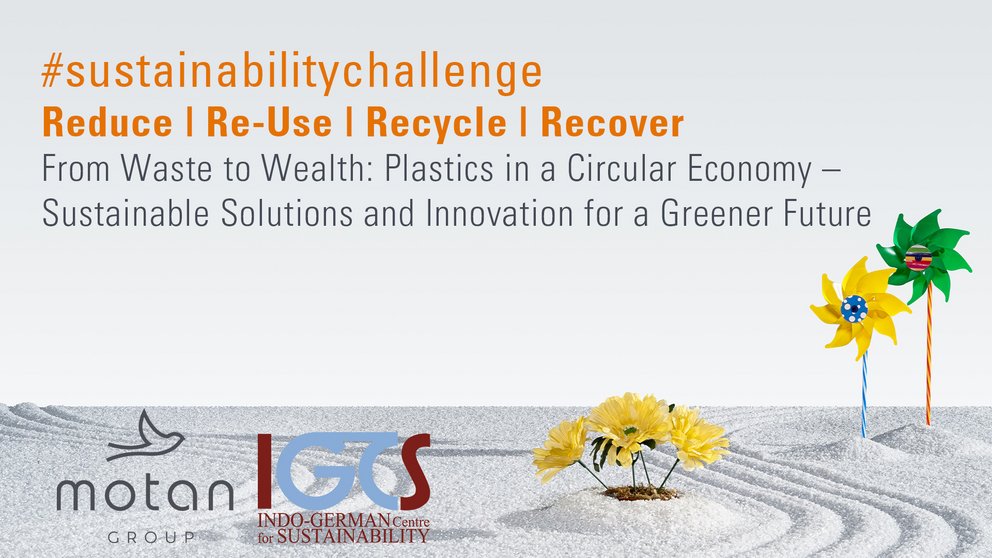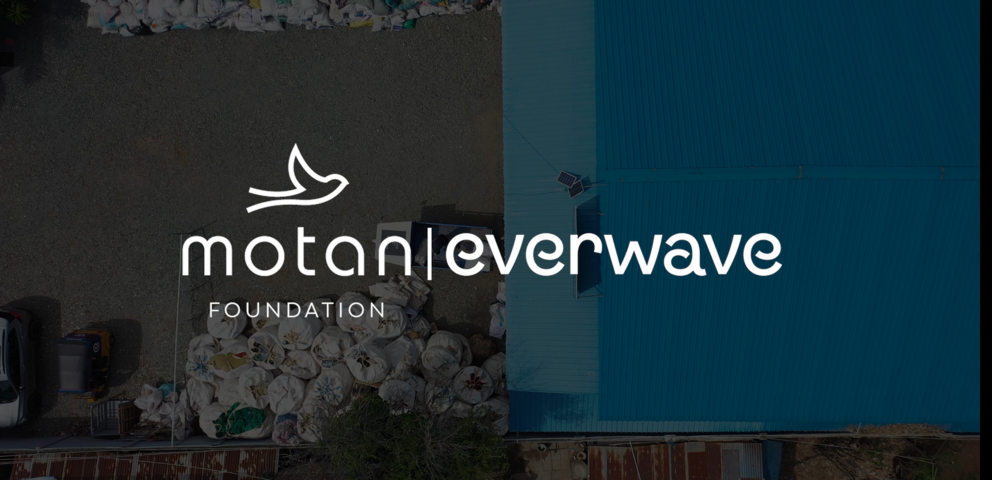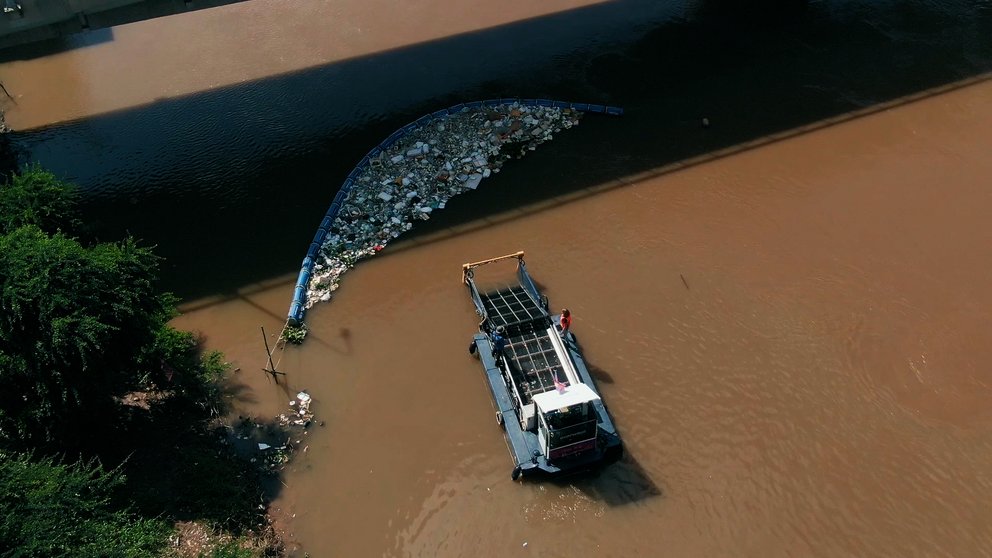Foam cores made from recycled PET-materials
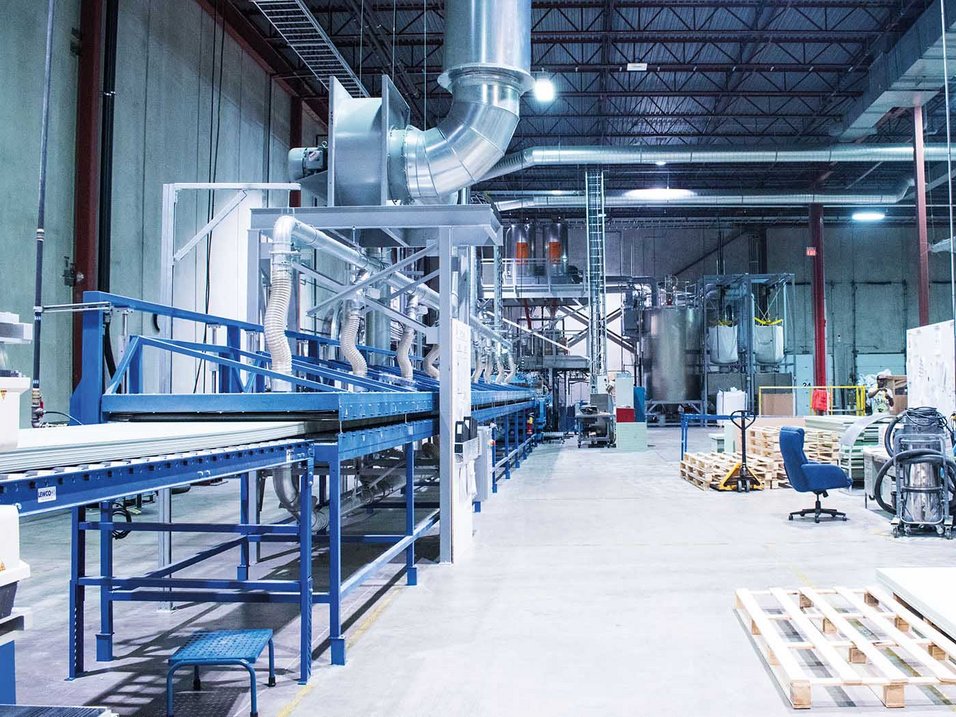
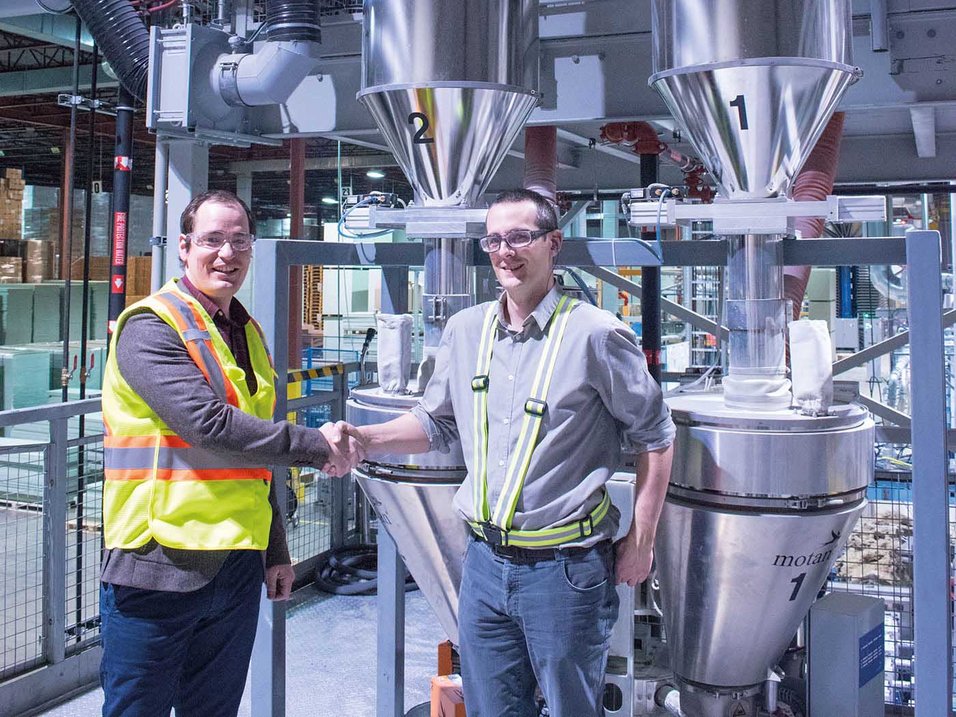
Two years previous to making this decision, Armacell purchased Canadian company Industrial Thermo Polymers Limited (ITP) in Brampton. Up to that point, foam pipes and other PE products had been produced using considerably smaller systems. Three months after the ITP acquisition the decision was made to build a large PET foam core production line in the Canadian facility.
Compared to the existing extrusion lines, the new system is far more complex: its maximum throughput is 1,500 kg/h, the thickness of the four-foot wide foam boards can be set between 5 and 150 mm, and the length of the board depends on the customer requirements. Equally complex is the raw materials handling system, for which Armacell Canada commissioned motan Inc., a subsidiary of the motan group. Both partners already knew each other indirectly through a previous cooperation with motan-colortronic’s sales partner ORA located in Belgium.
“One major advantage for us was that we could purchase the entire raw materials handling system, i.e. drying, conveying and dosing, from one provider”, explains Frédéric Gauder, PET production manager, who came from Armacell Benelux in Belgium to lead the integration of the line in Brampton. motan Inc. is the only company in North America which offers, as standard, all the required ancillary equipment for continuous processes: from storage and drying, through to conveying, dosing and mixing, with intelligent control networks.

A challenge during design was the material requirements of the extruder. “Because the system has a relatively high throughput and both PET and the additives require long drying times, we had to connect two LUXOR A 2400 m3/h dry air generators in parallel and use correspondingly large drying bins. In addition, the system had to be as compact as possible due to the space limitations”, reports Jan Rickenbach, Regional Sales Manager at motan Inc.
The extruder is fed with material from two drying bins, each with a capacity of 9,000 liters for PET virgin material and PET regrind. Two additional drying bins each with 1,200 liters volume supply the special additives. The PET needs to dry for approximately six hours, while the additives need even more time. To save space and the need for further material loaders, the drying bins for the additives were installed on a mezzanine immediately above the extruder. For the PET material feeding, two large Big Bag discharge stations were supplied.
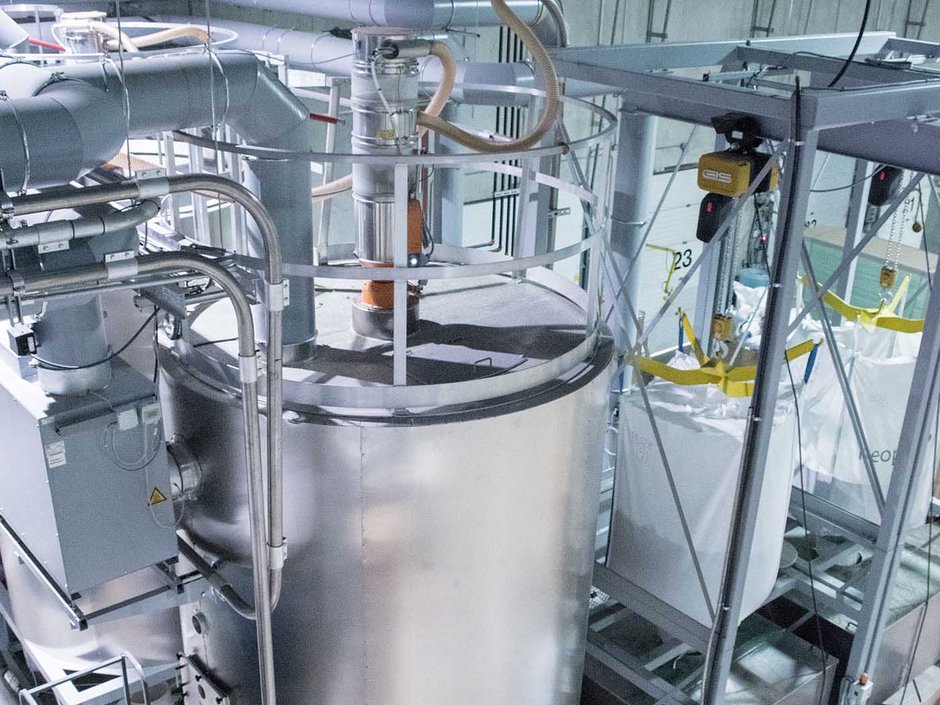
The components are dosed via a SPECTROPLUS gravimetric synchronous dosing and mixing station which is fed by two high-temperature material loaders, a METRO HCG 50 and a HCG 15, as well as a vibratory feeder. A filter less material loader was used in combination with a high-temperature central dust filter METRO F50-28 to capture the dust from the recycled material. Two vacuum conveying systems are responsible for supplying the raw materials: one for the two large PET drying bins, the other for the SPECTROPLUS and additive drying bins.
All the equipment in the raw materials handling system – drying, conveying and dosing – is controlled centrally by the system control of the extruder. From there, all required data such as target values and recipes can be set and monitored. The communication between the extruder control and the motan system occurs via Ethernet and a Profi Net interface. “It was necessary to modify the software to accommodate the special needs of the system with regards to drying and dosing. In this context, it was important that we discussed changes with the extruder manufacturer and tested the interface during system development”, explains Steve Watson, Technical Support Manager at motan Inc. “Completing the PET line in the short time frame we specifi ed requires teamwork and the commitment of all involved partners”, emphasizes Frédéric Gauder.
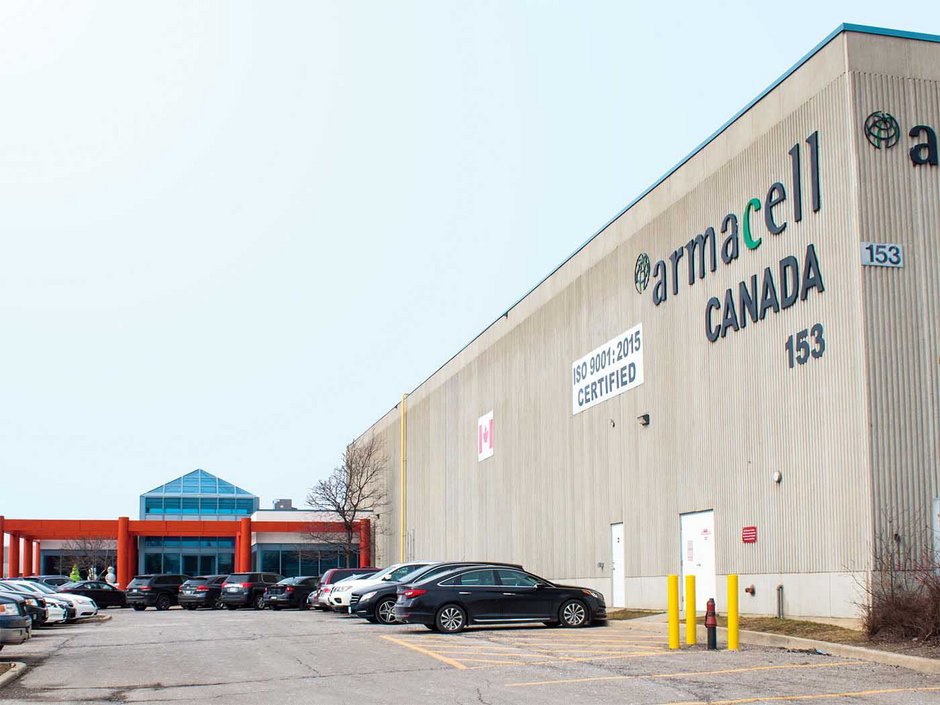
About Armacell
As the inventors of flexible foam for equipment insulation and a leading provider of engineered foams, Armacell develops innovative and safe thermal, acoustic and mechanical solutions that create sustainable value for its customers. Armacell’s products significantly contribute to global energy efficiency making a difference around the world every day. With 3,000 employees and 25 production plants in 16 countries, the company operates two main businesses, Advanced Insulation and Engineered Foams, and generated net sales of approx. EUR 603 million and adjusted EBITDA of approx. EUR 102 million in 2017. Armacell focuses on insulation materials for technical equipment, high-performance foams for high-tech and lightweight applications and next generation aerogel blanket technology.
For more information, please visit: www.armacell.com.

